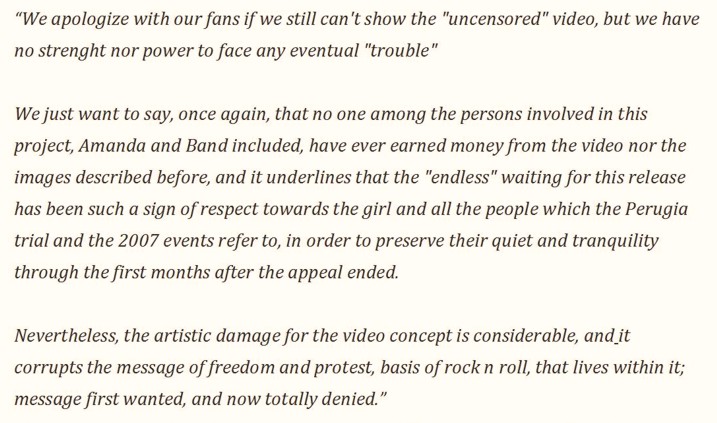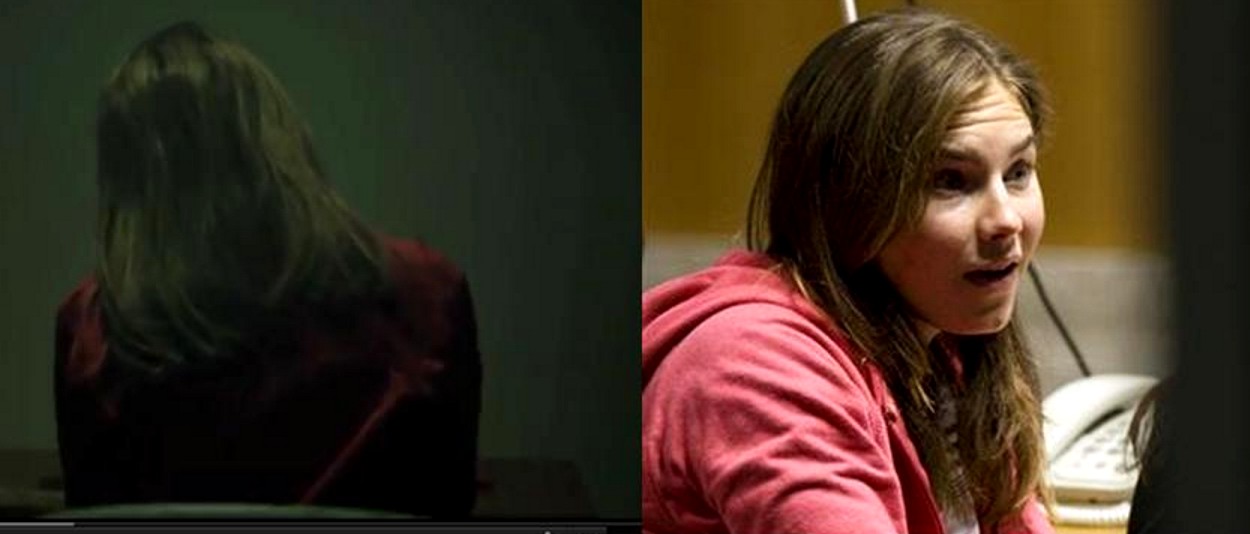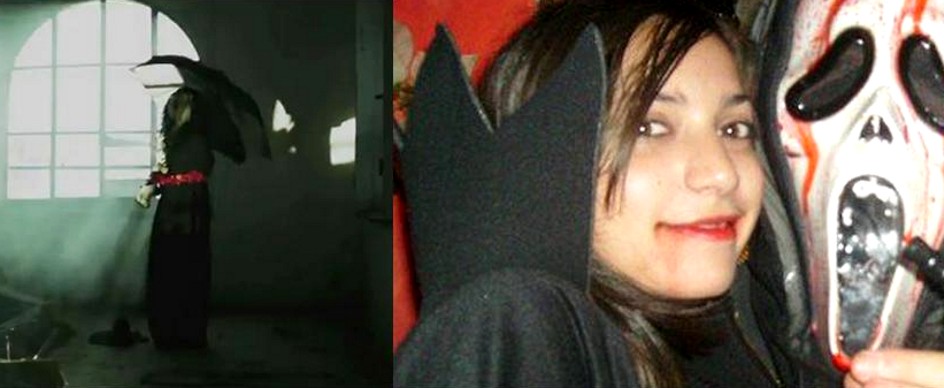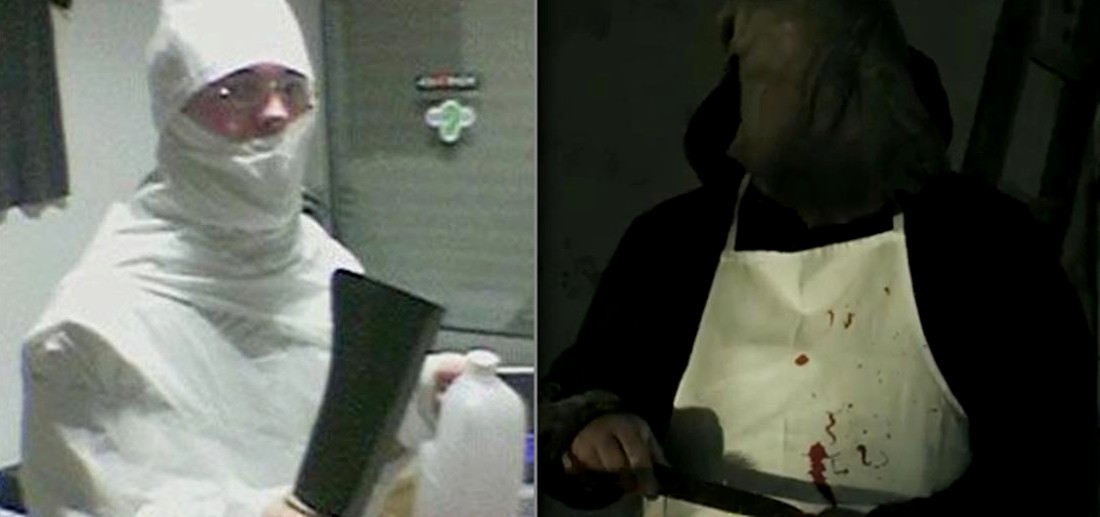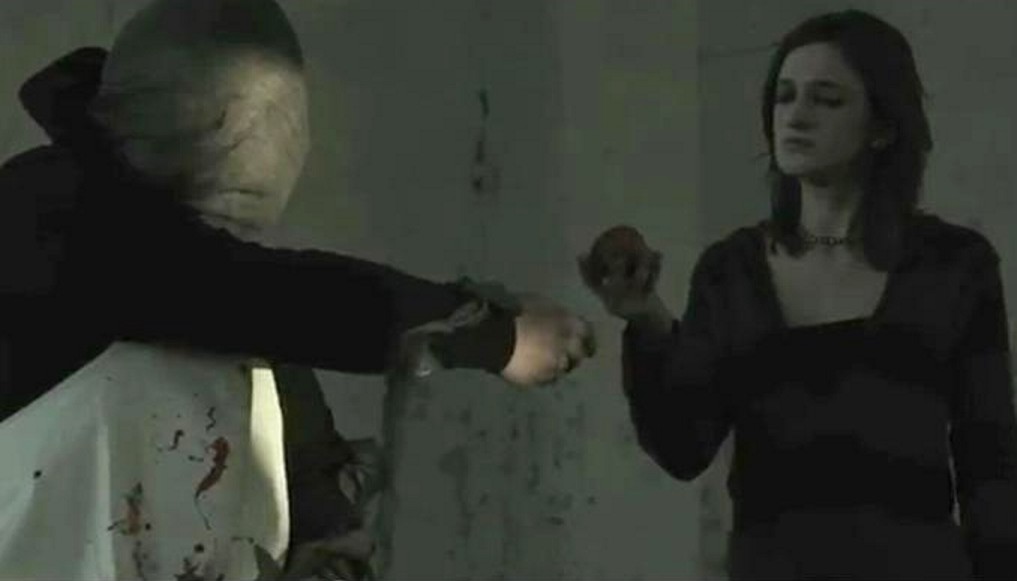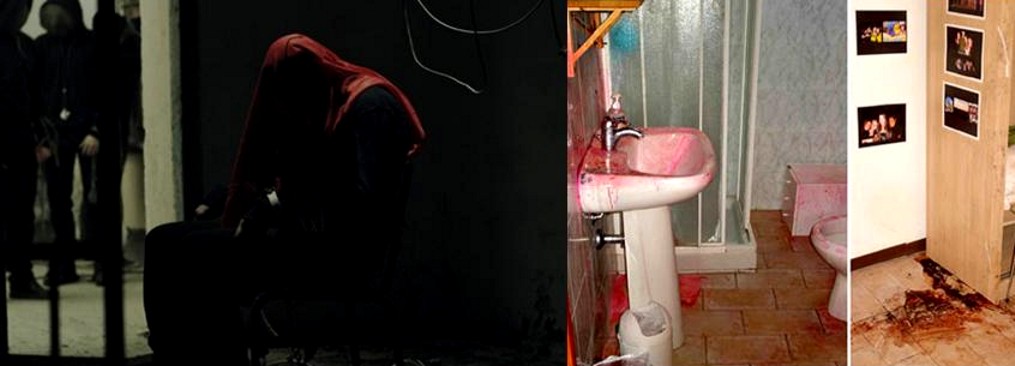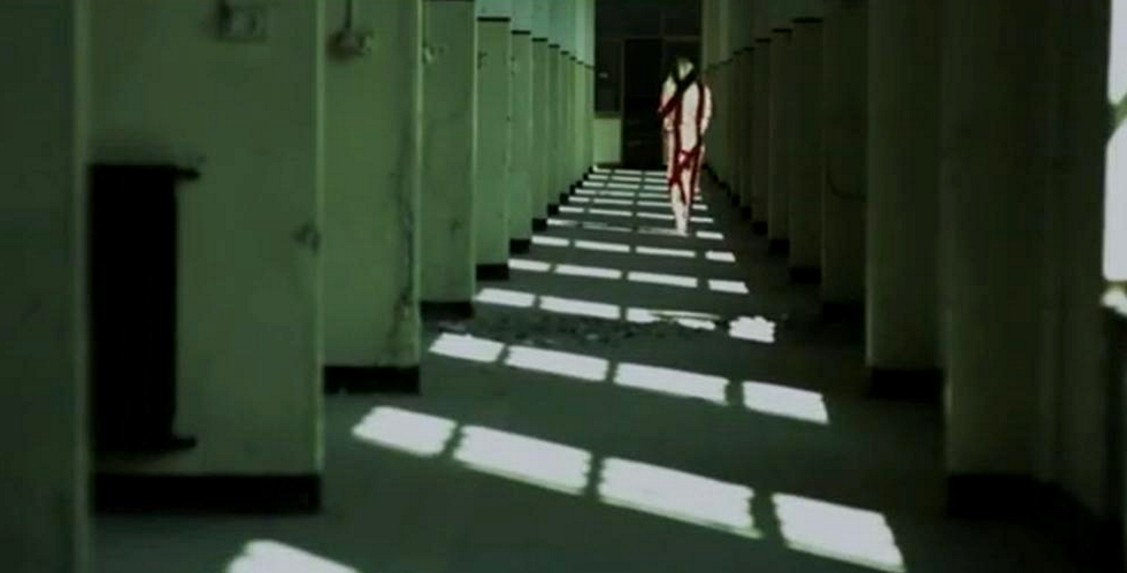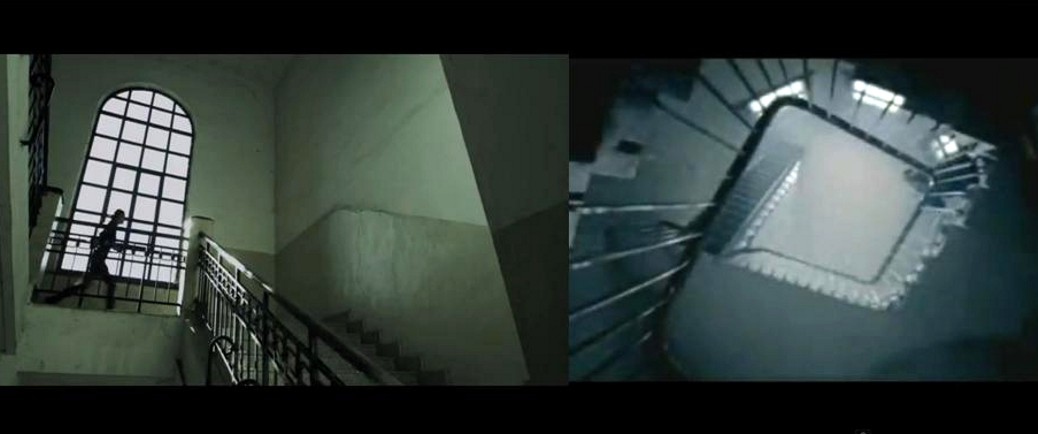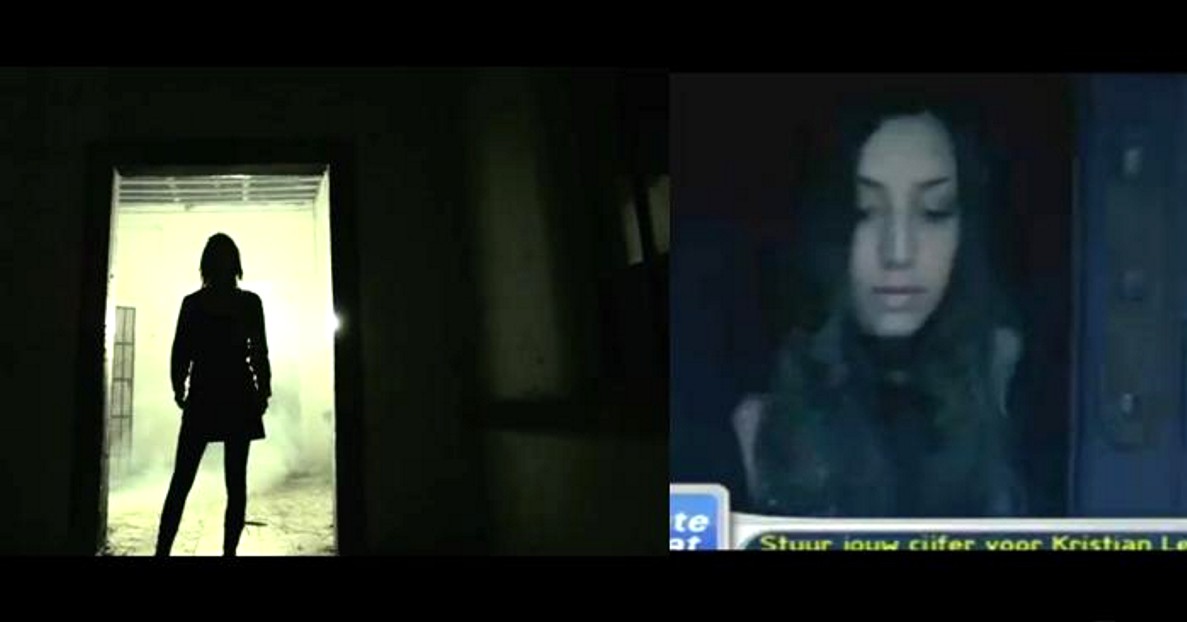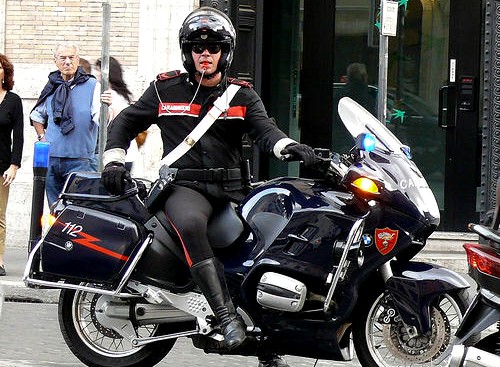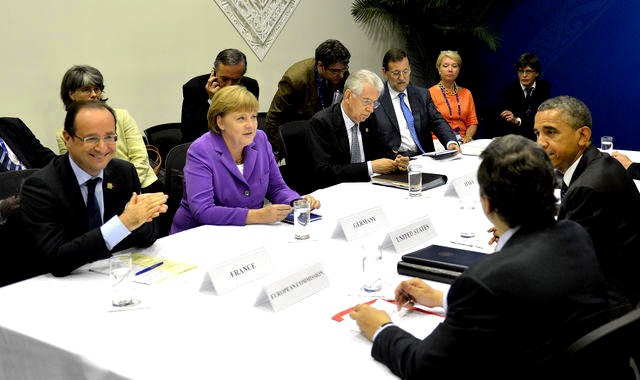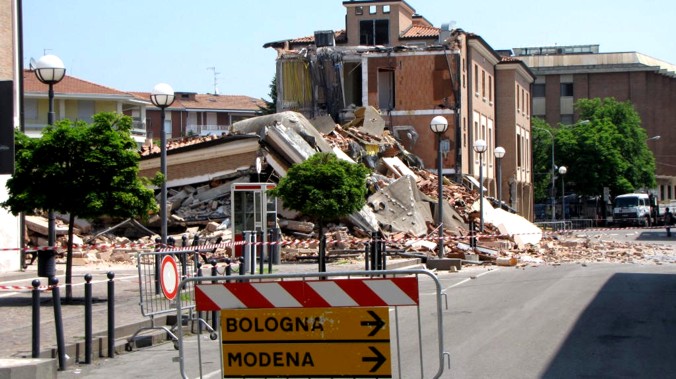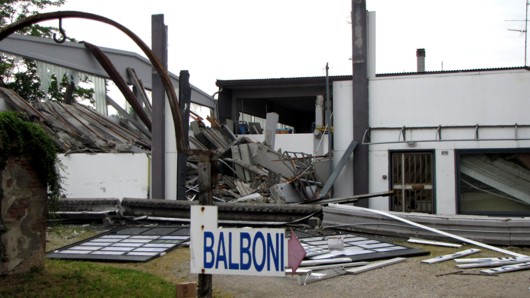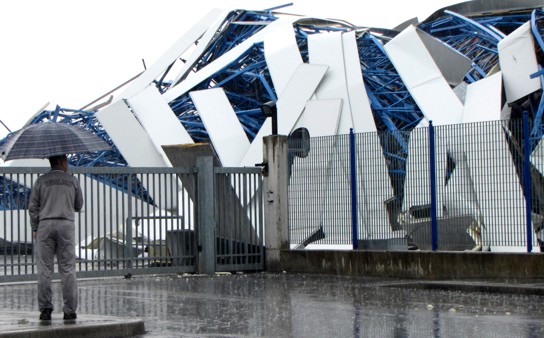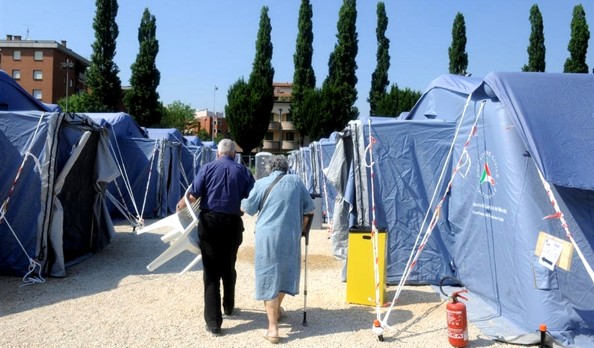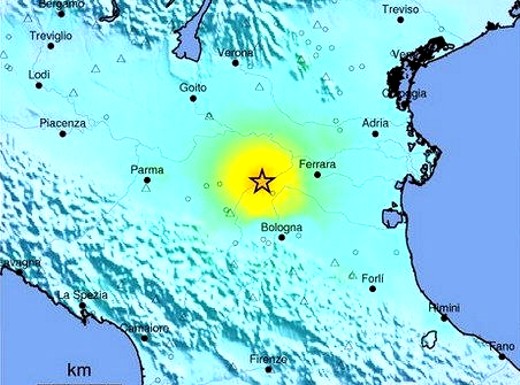
Saturday, July 21, 2012
Ominous Development For Sollecito And Knox: A DNA Conviction Based On A Tiny Sample Of DNA
Posted by The Machine

[Burgess, image below, murdered Yolande Waddington and, above, Jeanette Wigmore and Jacqueline Williams]
There is a HUGE dagger hanging over Sollecito and Knox. A UK case resolved this week indicates why.
New tests on the DNA sample on the large knife found in Sollecito’s house which the independent DNA experts refused to do, and the judges failed to re-order despite a strong prosecution request, could result in Knox and Sollecito being ultimately convicted and secure Knox’s extradition to serve out her term.
Lawyers consider it a dead certainty that the Supreme Court will order those tests - that is if they dont throw out the entire Hellman/Zanetti judgment for illegal scope, or throw out the DNA report for illegally having been ordered in the first place.
(1) Summary of the UK case
David Burgess this week was convicted in Reading of murdering Yolande Waddington, 17, some 46 years after the crime was committed, thanks to all the advances in DNA technology. Back then, he was already convicted of killing Jeanette Wigmore and Jacqueline Williams.
Burgess is the latest person in Britain to have been finally found guilty of murder years after his crime was committed. Nat Fraser, Gary Dobson and David Norris had been convicted of murder this year after evading justice for a number of years.
In September 2010, Thames Valley Police reviewed the case and with advances in DNA techniques finally gathered the evidence which resulted in Burgess being convicted of Yolande Waddington’s murder.
Forensic experts obtained a partial DNA profile from the blood samples using a new technique called MiniFiler. It differs from previous methods as it can obtain information from smaller pieces of DNA. This is ideal for older cases where samples have degraded over time.
According to the manufacturer’s website
[The MiniFiler kit] increases your ability to obtain DNA results from compromised samples that previously would have yielded limited or no genetic data. This means cold cases can come off the shelf for re-analysis and new, challenging samples have a better chance of delivering interpretable results.
When David Burgess attacked Yolande, he left blood on a number of Yolande’s items, including her hair band and comb. Tests showed the chances of the DNA found on the comb and hair band not being Burgess’s were not more than one in a billion.
[Below: David Burgess then and now who had taunted the police a year ago to “prove it”]

(2) Here are the implications for RS and AK
It puts the 46-day delay (caused by the defenses) in retrieving the bra clasp into perspective.
It’s not the first case of somebody being convicted of murder decades after the crime took place on the strength of DNA evidence. Ronald Castree was convicted of murdering Lesley Molseed 32 years later.
It also highlights the arrogant negligence of the DNA consultants Stefano Conti and Carla Vecchiotti who had refused to carry out ordered test on the knife for flimsy reasons (“the technology is experimental” when it wasn’t) that no US or UK court would have accepted. They had been specifically instructed to do the tests if possible by Judge Hellmann.
At trial in 2009 it was accepted that Amanda Knox’s DNA was found on the handle of the knife sequestered from Sollecito’s kitchen. There still is no argument about that.
And a number of independent forensic experts - Dr. Patrizia Stefanoni, Dr. Renato Biondo, Professor Francesca Torricelli and former Caribinieri General Luciano Garofano - had all confirmed that Meredith’s DNA was found on the blade.
Even Greg Hampikian, a forensic expert who argues Knox is innocent, concedes that Meredith’s DNA was definitely found on the blade.
Stefano Conti and Carla Vecchiotti didn’t know that Dr Stefanoni analysed the traces on the knife a long six days after last handling Meredith’s DNA. Contamination couldn’t possibly have occurred in the laboratory after so long a gap.
At the appeal, Professor Guiseppe Novelli testified that there are a number of laboratories that now have the latest accepted technology to carry out a new test on the remaining DNA on the knife.
The fact that Judge Hellmann denied the prosecution the opportunity to present evidence to the contrary was a violation of the procedure code. Italian law states the following:
If new evidence about a point is admitted, evidence a contrario proposed by the opposing party must always be admitted too.
Dr Giovanni Galati has now argued in his appeal to the Supreme Court that Judge Hellmann should have allowed a new test to be performed because the technology is NOT experimental but cutting edge. Summary here:
The second [point concerns] the decision to not allow a new forensic investigation requested by the prosecution at the end of the ruling discussion. In the appeal to Cassation it is written that the Appeal Court’s rejection reveals “contradictoriness/contrariness and demonstrates manifest illogicality in the grounds for the judgement/reasoning report”.
As remarked at the top, if the entire judgment or the DNA report are not thrown out for illegal scope, Judge Hellman’s refusal to allow the prosecution’s request to allow a new test on the knife will be the main reason why his verdict will be revoked.
Under Italian law RS and AK still stand accused until the Supreme Court signs off. Anyone who is concerned with the truth and justice and what Meredith stood for and the good name of Italy will want to know whether the remaining DNA on the knife is Meredith’s.
If Meredith’s DNA is identified on the knife it should make conviction and extradition a slam dunk..
[Below: ViaDellaPergola’s video first posted 18 months ago and still relevant]
Friday, July 20, 2012
Dissecting The Hellmann Report #1: Highlighting Representative Examples Of Its Many Bizarre Quirks
Posted by Cardiol MD
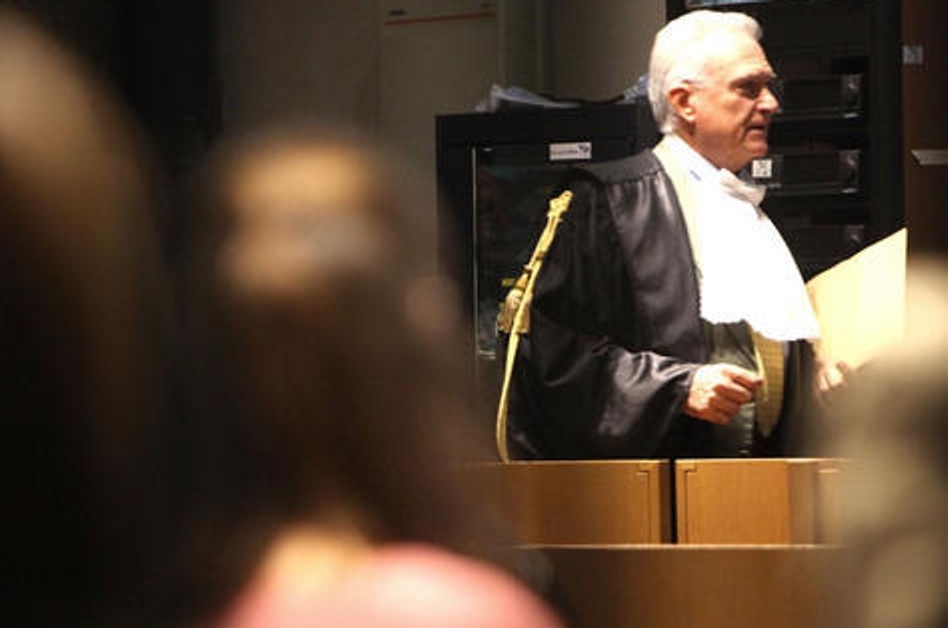
[Above: Judge Hellman. At bottom: Judge Zanetti, who may have written the sentencing report]
Milan and Rome are the main venues for Italy’s important business trials. Those in Perugia are small and relatively obscure.
In contrast Perugia handles very important criminal investigations for the central government when there are conflicts of interest in Rome. So Perugia was handed the very sensitive and politically explosive investigations into Rome politicians siphoning funds from the 2006 winter Olympics construction and the 2010 earthquake damage reconstruction.
This explains why Dr Galati the chief prosecutor for Umbria was transferred from the Supreme Court in January 2011 where he had been a deputy chief prosecutor and why he has a high profile throughout Italy. And why Judge Hellman, a business judge, is almost unknown outside Perugia who at times seems a little cranky with his lot in life. His co-judge Massimo Zanetti, also little known, handles civil trials.
Read in Italian, Dr Galati’s Supreme Court appeal against the Hellman/Zanetti appeal verdict which is some pages longer than the Hellman & Zanetti report, is absolutely scathing. (The team will have the PMF translation ready soon.) Dr Galati seems almost offended to be facing what he seems to see as a childish and legally inferior piece of work.
Dr Galati takes Hellman & Zanetti apart at three levels, as the Perugia media summarised at his press conference five months ago.
First, that the scope is illegally wide for an appeal judgement. Second, that the DNA report by Stefano Conti and Carla Vecchiotti (which concluded with innuendo rather than firm findings) was unnecessary at the appeal level and should never have been commissioned. And third that Hellman & Zanetti are out of order in their subjective interpretations of trial evidence their appeal court mostly didnt look at, and trial witnesses their appeal court never saw.
As a lawyer in the common-law systems of the US and UK I have read plenty of equivalent arguments by judges which logically and legally and objectively almost always hit a very high plane.
On the Hellman & Zanetti report I have to agree with Dr Galati. This seems a dismally inferior piece of work.
To me this document reads like the work-product of a naïve freshman law student in appellate procedure class submitted with no reasoned presentation of facts and evidence as a defendant’s brief, instead of as the official report of a Regional Court Of Assizes Of Appeal submitted in the name of the Italian People with a sober presentation of Facts and Evidence and a reasoned Explanation of Conclusions.
In my view and surely Dr Galati’s it deserves no more than an F.
The Hellman/Zanetti report is emotional and hyperbolic, but it is neither persuasive nor professional. Its faults are so densely packed that any TJMK series fully analyzing them would need more space than posting of the full Hellmann/Zanetti Report.
The calunnia section alone (2,447 words long) to do with Knox’s framing of Lumumba has more than 50 dubious statements. It is also short enough to demonstrate here the weaknesses typical of the whole report, despite this section’s secondary bottom-line significance.
The very first line of this section (beginning on page 21 of the PMF translation) typifies the tone of the whole Report.
The “spontaneous” declarations rendered by Amanda Knox on November 6, and the “¦”¦.
Note Hellmann & Zanetti’s contemptuous use of quotation marks here.
On the same page Hellmann & Zanetti begin a paragraph thus: “According to the hypothesis of the prosecution”¦”, but then don’t go at all to state the real hypothesis of the prosecution.
Instead, Hellmann & Zanetti glide smoothly into preposterous “˜straw-man’ sophistry in which he attributes to the prosecution his own speculative and prejudiced conclusions, instead of the hypothesis the prosecution did submit:
Amanda Knox, at that point exhausted from the long interrogation, and above all demoralized by having learned from the people interrogating her that Raffaele Sollecito had, so to speak, abandoned her to her destiny, denying the alibi [30](Motivazione page number) that he had offered her up to then (having spent the whole night together at Sollecito s house), supposedly resorted to a final defence effort, representing more or less what actually happened in the house at via della Pergola, but substituting Patrick Lumumba for Rudy Guede in the role of protagonist: one black for another, to quote the Prosecutor.
This Court does not share the hypothesis of the prosecution.
Actually this (Hellmann & Zanetti) court misrepresents the hypothesis of the prosecution as argued above.
“...exhausted from the long interrogation, and above all demoralized” These do not need further comment. They are Hellmann & Zanetti’s own biased edits, disguised as prosecutors’ hypotheses.
“...having spent the whole night together at Sollecito’s house…” Here Hellmann & Zanetti seem to blithely assume the truth of Knox’s disputed alibi, but is probably merely repeating what her alibi was not “blithely” assuming it to be the truth. If so he should have used the proper quotation marks.
So do Hellmann & Zanetti sympathise with Knox’s demoralization at the denial of her false alibi? How do they explain the apparent conflict between “˜more or less what actually happened’ and “˜spent the whole night together at Sollecito’s house’? See later.
“”¦representing more or less what actually happened in the house at via della Pergola”¦” Here, Hellmann & Zanetti begrudgingly seem to acknowledge that Knox was present in the house at via della Pergola, but later will disavow any guilt on Knox’s part, except for her calunnia offence.
Continuing on the first page of his report’s calunnia section, Hellmann & Zanetti state:
The obsessive length of the interrogations which took place day and night and were conducted by several people questioning a young and foreign girl, who at that time did not understand or speak the Italian language well at all, ignorant of her own rights and deprived of the advice of a lawyer, to which she would have been entitled since she was”¦”¦
“...obsessive length…” This seems too obviously inappropriate to need further comment. The interrogations themselves were actually quite short.
“...took place day and night… ” This is factual, but hyperbolic; included for both dramatic implication and dramatic inference.
“...young…” Youth is a mitigating factor in Italian law, so Hellmann & Zanetti’s reference to Knox as “˜young’ is not an irrelevancy, but they do allude to the youth of the persons involved over three times more frequently than Judge Massei did.
“...foreign…” This is also relevant because Knox was not fluent in Italian, although an interpreter was provided.
“”¦ignorant of her own rights”¦” This is true in almost all criminal cases, but there are no signs here that Knox’s rights were trampled on.
“”¦deprived of the advice of a lawyer, to which she would have been entitled”¦” She was only a witness at this point so a lawyer was not required under the Italian code.
My understanding is that Knox was in fact informed that she had the right to the advice of a lawyer, was offered such advice, but declined it. So “deprived” again smacks of the Hellmanian or Zanettian hyperbole-for-dramatic-effect.
There are many other dubious statements in Hellman & Zanetti’s calunnia section. Here are a couple of typical ones:
”¦.Amanda Knox, who had no reason at the beginning to be scared, entered into a state of stress and oppression as a consequence of the interrogation and the way it took place.
The dispute, yet to be resolved with a reasoned explanation by the Hellmann & Zanetti Court, was whether Knox and Sollecito were guilty or not guilty.
Here, Hellmann & Zanetti have already assumed Knox’s plea of Not Guilty to have been proven, though they have offered no reasoned explanation for such assumption.
Guilty or Not Guilty, Knox actually did have every reason to be scared, merely because normal Discovery-Procedures can be scary; other members of the group of Discovery witnesses were scared too. (I use “Discovery” in the sense of legal disclosure, including but not restricted-to the discovery-of-Meredith’s-body.)
If Guilty, Knox had additional real reason to be scared.
It is in fact not at all logical to assume that Amanda Knox, if she had actually been an accomplice [concorrente] in the crime, could hope that giving Patrick Lumumba’s name”¦”¦could have somehow benefited her position”¦.
Hellmann & Zanetti’s sophistry consistently requires the reader, elsewhere, to attribute Knox’s inconsistent, and incriminating, often illogical, falsehoods and behaviours, to Knox’s confusion caused by prosecutorial oppression. Some of those falsehoods were used by Knox very obviously in the hope of benefit to Knox.
But now, Hellmann & Zanetti inconsistently require the reader to believe that it is not at all logical to assume that Knox could hope to benefit from one of her falsehoods.
But of course Knox could hope to benefit from one of her falsehoods.
Elsewhere in its Calunnia section (page 22 of the translation) Hellmann & Zanetti had already argued, that
“¦.the fact that the caresses, simple signs of tenderness between two lovers, could have been a way of comforting each other”¦..
Here, Hellmann & Zanetti are deceptively implying that lovers comforting each other, having (only) an innocent construction, excludes the existence of a factor additional to love, namely that of a guilty-pair afraid of exposure as a guilty-pair.
The potentially most incriminating issues in this case are whether Meredith did scream just before she died, and if so when Meredith screamed.
The Amanda Knox and Raffaele Sollecito “innocentisti” members know this, but they avoid focus on it in order to minimize attention to those issues, as crucial as they are.
A key focus-avoidance ploy is to confuse the issue by isolating each element of evidence from every other element and flood discussion of each element with real and imagined reasons-to-doubt the significance of each element.
By doing so, perception of the location of Reasonable Doubt, in the mind of the designated Finder(s)-of-Fact, may be displaced so far away that they conclude that Guilt cannot be reached, and that the Defendant(s) are Not Guilty beyond a doubt that is a Reasonable Doubt.
This defense ploy is being employed more and more in criminal trials, and is much employed in Meredith’s case, or as it has become, Amanda Knox’s case. The Supreme Court of course will totally ignore such legal nonsense.
The first-ever documented references to Meredith screaming just before she died came from the mouth (and hand in the case of her notes) of Amanda Knox herself.
Hellmann & Zanetti do not, at first, seem to doubt that a scream was heard by witness Capezzali that night.
However, they introduce the issue of scream under the Heading Time of death, which they characterize as “extremely weak for its ambiguity, since it cannot even be placed with certainty”, as if lack of “certainty” is way-below reasonable doubt (as in “required to reach a guilty-verdict beyond-a-reasonable-doubt”), obfuscatingly merging them into each other.
Hellmann & Zanetti then cast doubt on whether any witness(es) heard any-scream-at-all that particular night and/or time, because he supposed (innocent) screams were to be heard there on many nights and at many times.
Hellmann & Zanetti stated that their Court had “no real reason to doubt” that a scream occurred at night in the general vicinity of Meredith’s house NOR to suspect that witnesses who testified that they had heard a scream had not heard a scream.
What Hellmann & Zanetti claim that they do doubt is that the scream witnesses testified to having heard occurred at a sufficiently specified definite time, or that the scream they said they heard had actually occurred on the night of Nov. 1-2, 2007, and that even if such a scream did occur it is not “certain” that the scream was Meredith’s scream.
Hellmann & Zanetti’s use of “certain” reveals a biased perspective. It is as if “not certain” is now Hellmann & Zanetti’s equivalent to “not beyond a reasonable doubt.
A well-known saying goes “If it looks like a duck, walks like a duck, and quacks like a duck ““ it’s a duck.”
Applying the evidentiary-item-isolation-ploy to that saying, multiple doubts are introduced as to each item, with the intended result of promoting enough doubt to exclude it, too often successfully.
This could be called the Ugly Duckling Effect, after H.C. Andersen’s Fairy Story ““ here Hellmann & Zanetti seem to want us to conclude that Amanda Knox is a swan, and is not really an ugly duckling.
[Below: Judge Zanetti at left probably wrote the report that Judge Hellman may not have liked]
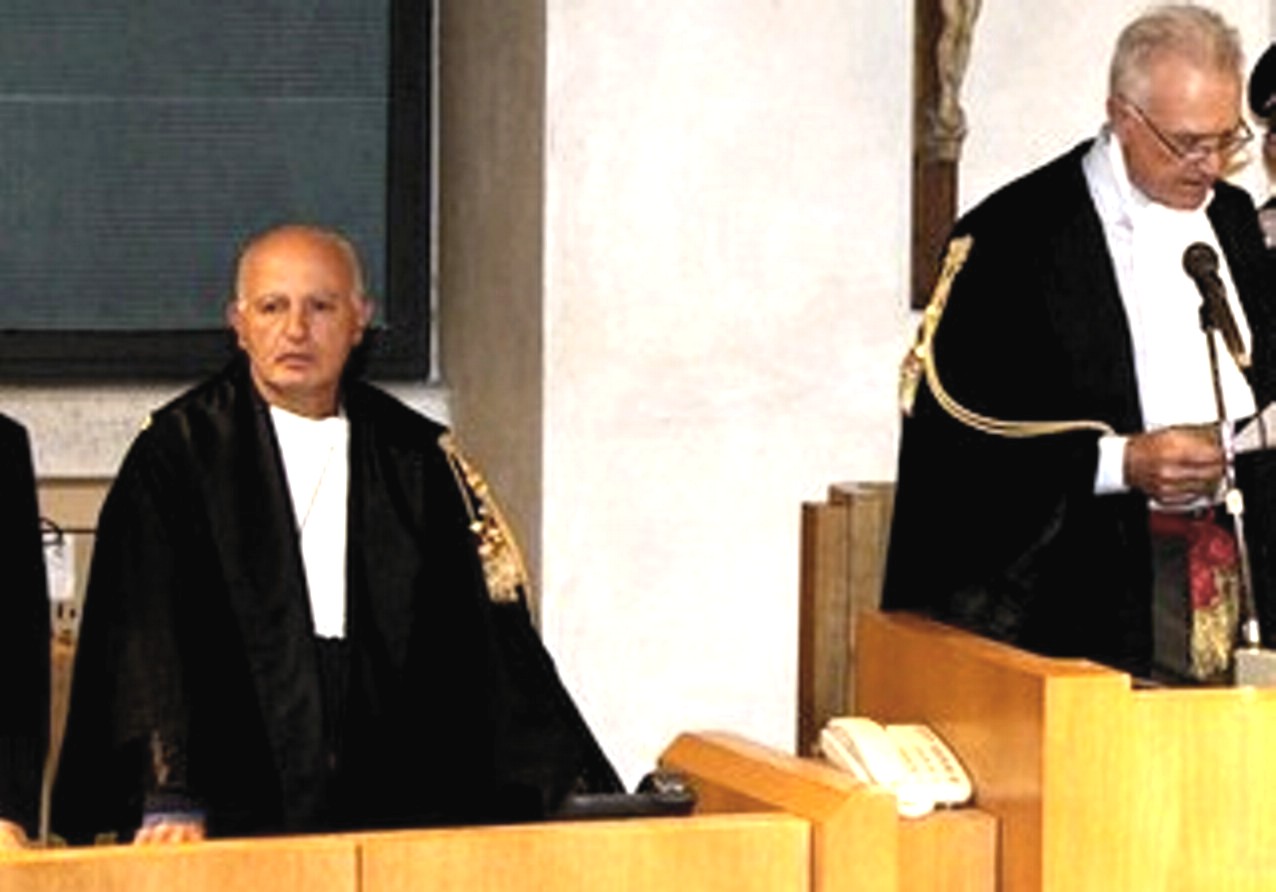
Thursday, July 19, 2012
This Formidable Prosecution Appeal To The Supreme Court Is Placed On The Agenda Next March
Posted by Peter Quennell

The Associated Press once again reveals its strong systematic anti-Italy bias in reporting the scheduling of the appeal.
Its headline on the report it sent out to thousands of its owners the media outlets reads “Amanda Knox Case: Acquittal Appeal Set For March By Italy”
Huh? That is the guts of the thing?
Well, hardly.
First, defense chances are slim, as there is no question that Knox did point falsely to Lumumba. On tape she even admitted that to her own mother, and her various explanations on the stand at trial simply dropped her in it some more.
That defense appeal could be dismissed in a sentence or two. It is simply grandstanding.
And second, vastly more importantly because this could lead to a complete retrial back in Perugia the AP headline and story should have fully explained the real 80,000 pound gorilla in the room.
This is the appeal that the Chief Prosecutor for Umbria Dr Galati has filed. The Associated Press has never told the global audience either what is in the prosecution appeal or precisely who Dr Galati is. Not even a hint.
Dr Galati was a Deputy Chief Prosecutor at the Supreme Court and is one of the most powerful and experienced in Italy. Why was he not quoted in the AP’s story?
Here is the real story of his appeal that the Associated Press doesn’t seem to want the global audience to know. First posted here back on 14 February when Dr Galati called his press conference on the appeal.
Italian lawyers are already remarking that Dr Galati’s appeal as summarised below is as tough as they ever get.
In their view the Hellman report reads more like a defense brief than a balanced appeal-court outcome in a murder trial. Both judges were put on the case on mysterious instructions from Rome, suggesting that the minister of justice had perhaps been leaned on - the judge pushed aside was extremely annoyed.
Both Judge Hellmann and Judge Zanetti, while undeniably good judges in their own fields (business and civil), are vastly less experienced at criminal trials than either Judge Micheli or Judge Massei. The entry in the Italian Wikipedia describes them thus.
Although the Assize Court of Appeal was to be chaired by Dr. Sergio Matteini Chiari, Chairman of the Criminal Division of the Court of Appeal in Perugia, in circumstances not well understood Dr. Claudio Pratillo Hellmann, who chairs the Labor Chamber of the Court, has been called on to preside over the appeal court,
The judge to the side of the main judge, Dr. Massimo Zanetti, came from the Civil Section, and both had had limited experience with criminal trials both rather remote in time (only the cases of Spoleto and Orvieto).
Judge Hellmann’s announcement of the verdict on the night was very odd, suggesting he had been outnumbered and was embarrassed. Remarks he made the next day seemed to confirm that. The weak sentencing report is said to be not his work, and was written by Judge Zanetti.
The Supreme Court of Cassation could insist on a complete new appeal trial or a partial new trial in Perugia if it accepts any of Dr Galati’s arguments at all. His appeal statement appeal is in three tiers, and a reversal could be ordered at any tier..
1. The Hellmann Court’s wide scope was illegally far too wide
Italian judicial code is very clear on this. They MUST stick to just the appealed items and not wander all over the map. Judge Zanetti was quite wrong at the start to declare that everything was open except the fact that Meredith had been murdered.
2. The DNA consultancy by Stefano Conti and Carla Vecchiotti was illegal
Defenses had every chance to attend the Scientific Police testing the first time around. It was a slippery dodge to skip those tests and then slime them. They had every opportunity at trial to throw aspersions. They are not meant to shop around.
3. There are many problems of wrong logic, evidence, and witnesses
The Massei trial sat through weeks and weeks of skilled prosecution presentations of the evidence including the forensic evidence and the many witnesses. The Hellman court got to see almost none of this and heard mostly from the defense.
This translation is from Umbria24 by our main poster ZiaK.
Meredith case: the prosecution appeals to Cassation: the acquittal verdict should be “nullified”.
For the Chief Magistrates of the [Umbria] Prosecution, “it was almost exclusively the defence arguments which were taken heed of”
By Francesca Marruco
The first-level conviction verdict was “complete and thorough” while the verdict of the second-level is “contradictory and illogical”. For this reason, the General Prosecution of Perugia asks the Cassation to revoke or invalidate it.
“We are still extremely convinced that Amanda and Raffaele are co-perpetrators of the murder of Meredith Kercher” said the Chief Prosecutor of Perugia, Giovanni Galati and the Deputy Chief Prosecutor, Giancarlo Costagliola.
Verdict that should be revoked
“The second-level verdict should be annulled/revoked…. There are precise reasons for revoking it”, Mr Galati went on to say. In the Hellman reasoning report on the verdict with which the second-level judges acquitted the ex-boyfriend and girlfriend “there are so many errors, and many omissions. There is inconsistency in the grounds for judgement, which brings us to nothing.”
“It is as if they had ruled ex novo [anew] on Meredith’s murder” added the Deputy Prosecutor, Giancarlo Costagliola, “basing their decision solely on the arguments of the defence.”
“Normally the appeal judge evaluates the reasoning procedure of the first-instance judge and compares it to new elements. But this one missed that out altogether: there is no comparison between the checks carried out in the first and second instances. Only what was carried out during the appeal was evaluated.”
Only defence arguments were taken heed of
For the magistrates, in fact, the second-level judges “took heed, almost exclusively, of the arguments of the defence consultants or the reconstruction hypotheses that were largely to the benefit of the defense theses”.
The prosecutors who authored the appeal [to Cassation] also criticized the “method used”. “The first-instance verdict”, they wrote, “was summarized in just a few lines”,
“The verdict [which we] challenge completely ignored all the other aspects which corresponded with the accusation’s hypothesis, all the aspects which, on the contrary - as was seen in the reasoning report of the first-instance verdict - had been rigorously pointed out and considered by the Assizes Court [trial court] in its decision.”
“In examining the individual [items of] evidence, the challenged sentence has fallen into consistent procedural error in the weaknesses and evident illogicality of the grounds for its decision.”
Prejudice by the two appeal judges
For the General Prosecution magistrates, the second-level [first appeal] judges appear to have shown “a sort of prejudice” with the “infelicitous preamble of the judge [the author], who is supposed to be impartial”, when he declared that “nothing is certain except the death of Meredith Kercher”, which to the others [Mr Galati and Mr Costagliola] is nothing more than “a resounding preview/forecast of the judgement” and a “disconcerting” affirmation.
The ten points of the appealThe reasons for the appeal to Cassation which Perugia’s General Prosecution presented today against the acquittal verdict of Amanda and Raffaele are based on ten points of the second-level verdict.
The first is the lack of grounds for the decision, in the decree of 18 December 2010, to allow the forensic testimony/expert witness in the appeal judgement.
The second, in contrast, concerns a contrary decision: the decision to not allow a new forensic investigation requested by the prosecution at the end of the ruling discussion. In the appeal to Cassation it is written that the Appeal Court’s rejection reveals “contradictoriness/contrariness and demonstrates manifest illogicality in the grounds for the judgement/reasoning report”.
The other points deal with the decision by the Appeal court of Assizes of Perugia to not hear the witness Aviello, also the definition of “unreliable” [in the Hellman Report] with reference to the witnesses Roberto Quintavalle and and Antonio Curatolo, also the time of death of Meredith Kercher, also on the genetic investigations.
As well as the analyses of the prints and other traces, also the presence of Amanda and Sollecito in via della Pergola, also the simulation of a crime [the staged break-in], and also the exclusion of the aggravating circumstance of the crime of “calumny”.
Missing assumption/acceptance of decisive evidence
In the appeal to Cassation there is also mention of the “missing assumption/acceptance of a decisive proof”
In other words, of that proof [presented at trial court] which consisted of “the carrying out of the genetic analysis on the sample taken from the knife by the experts appointed by the Court during the appeal judgement, who did not carry out the analyses of that sample, thus violating a specific request contained in the [orders given to them] when they were assigned to the expert-witness post”
“In the second-level [Hellman] verdict”, the magistrates said, “the judges sought to refer to this in their own way, by speaking of an “experimental method” by which these tests/checks could be carried out.
But this is not the case”, said Deputy Chief Prosecutor Giancarlo Costagliola: “Dr Novelli [the prosecution’s DNA consultant at appeal] spoke of cutting-edge technology, not of experimental methods”.
Wednesday, July 04, 2012
The Hands Of Time Video With Screenplay By Amanda Knox - A Confessional Obsession?
Posted by Fly By Night & Thundering
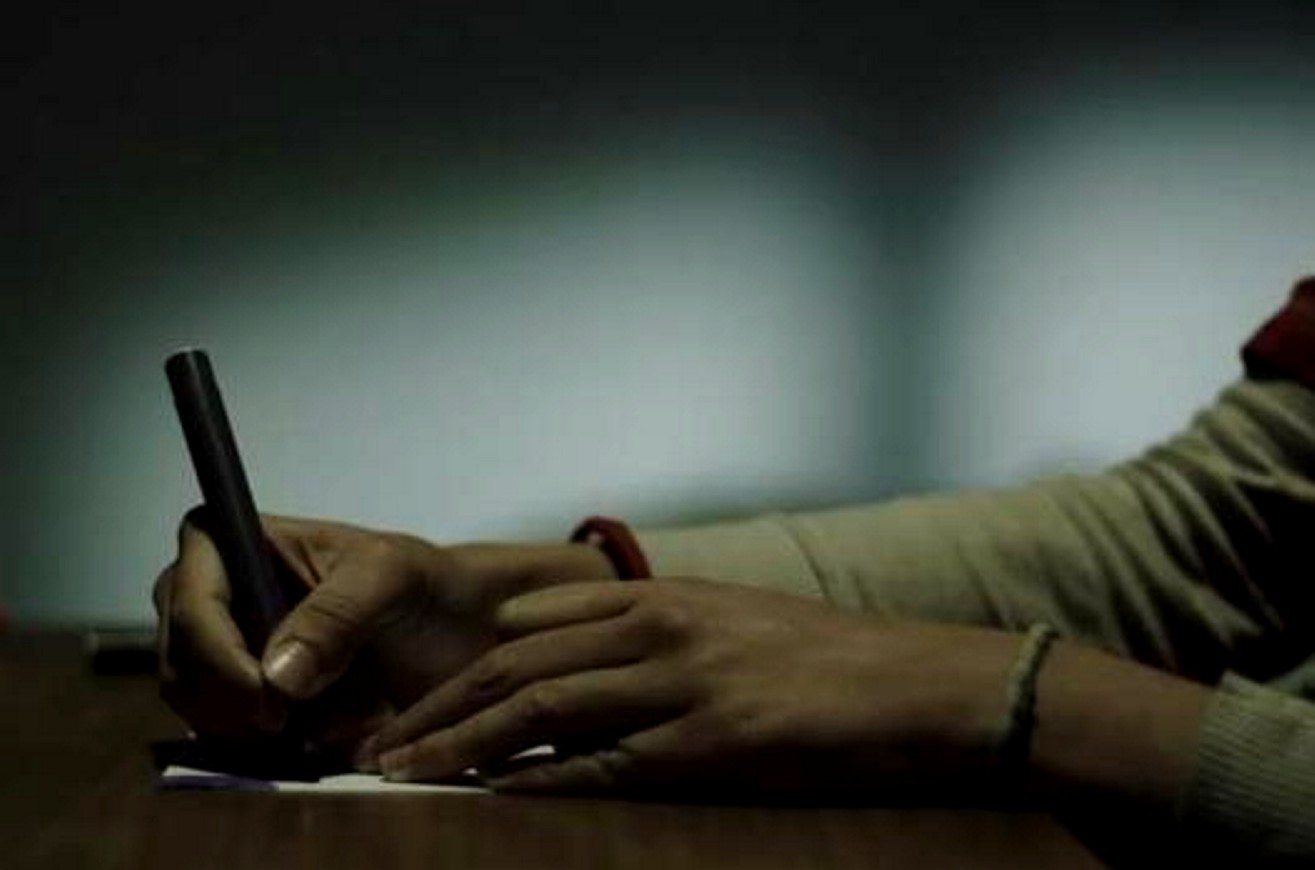
Amanda Knox rarely, if ever, mentions her “˜close friend’, murder victim Meredith Kercher. Perhaps out of her self-proclaimed desire to “˜move on with her life’.
So the recent Hands of Time (H.O.T.) music video The Mistral Blows which was posted on YouTube with a screenplay attributed to the Seattle native is nothing if not astonishing.
Whilst there is some discussion as to whether Amanda Knox wrote the entire screenplay, or a section of it, or whether the screenplay was created through a merging of several versions, the screenplay is clearly attributed to her in the credits that appear on the video.
Crediting Amanda Knox with the screenplay is repeatedly emphasized by H.O.T. themselves who posted multiple Twitter entries:
And this screenplay does Amanda Knox and her claims of innocence in the brutal murder of Meredith Kercher no favours at all.
Although provisionally “˜acquitted’ at the trial of second instance, Amanda Knox still stands accused of a capital crime, aspects of which she seems compelled to continue to portray in her various writings.
The hapless band H.O.T. might be well-advised to disassociate themselves from this endeavour and drop the video like a hot potato. The more-so as they have already burnt their fingers, tampering with the so-far elusive Brand Knox, finding themselves “˜forced to remove [clips of Knox dancing in Capanne] from the file, after a sudden, unexpected and “very strange” last-minute opposition from Amanda’s entourage.’
They state with a hint of bitterness:
The result? A compromise. The image of Knox dancing with carefree abandon in Capanne Prison (easily retrieved from other internet sites) remains, but is obliterated by a large “˜censored’ notice.
The reasons to attempt to disappear this video or, at the very least, any identifiable links with Knox, are abundantly clear to anyone having followed this dreadful case over the last four and a half years.
1) The video is riddled with allusions to the crime itself and features an easily-identifiable Amanda Knox as “˜heroine’ or “˜victim’ as she may now prefer to be seen and depending on how you look at it.
2) Any pre-book-release publicity will potentially devalue the carefully branded and preserved Amanda Knox product.
A cursory look at the video demonstrates the depraved audacity of the writer, a person who simultaneously insists she was found innocent of the crime of murder and of which she still stands accused.
The video features a Knox look-alike ““ recognizable by her clothing - in a prison-cum-house of horrors.
It opens with the heroine sitting down, colouring pictures in a prison cell. Amanda Knox was reported to spend time colouring pictures of her hands whilst in prison.
From there she leaves the cell and embarks on a journey through a range of horrifying experiences, until she finally flees the house but not the prison to which she is eternally condemned.
As she runs through the house of horrors she encounters:
1) Ghost-like figures lurching out at her hinting at the night of Halloween before the murder and the ghouls and demons of the house of horrors both in which the crime took place and in which she is forever imprisoned.
2) A tall, faceless black-haired figure dressed in black carrying an umbrella resembling Meredith Kercher dressed as a vampire on her last night alive, the red belt reminiscent of the fake costume blood and the actual blood spilled the night of the murder.
3) A faceless butcher figure dressed in a blood-stained apron holding a knife, who hands her a maggot-infested apple, reminiscent of the photograph of co-accused Raffaele Sollecito as posted on his Facebook page. The apple is suggestive of the poisoned apple offered by the witch to the innocent Snow White ““
4) Or a subliminal suggestion of Raffaele’s guilt in handing her the infested and poisonous apple “¦.. Remember: she claimed Raffaele may have pressed the murder knife with Meredith’s DNA into her hand whilst she was sleeping.
5) A figure tied to a chair covered in a red cloth hinting of the pools of blood and of Meredith unable to move to defend herself. As she reaches out to lift the red cloth the bound figure screams, sending her running out down staircases and steps and out of the house.
In the same way, witness Nora Cappezzali heard Meredith’s desperate, blood-curdling scream, followed shortly afterwards by running footsteps out of the house of horrors and onto the steel staircase near her home.
The video ends with the Knox look-alike remaining in prison. Both real and imagined.
H.O.T. suggest that the video and screenplay are a means of documenting the tale of the events in Perugia and, of course, Amanda Knox hopes to chronicle the nightmare in which she “˜innocently’ found herself. In so doing, she inadvertently describes the crime and the images, sounds and memories that will seemingly not leave her alone.
Not only are there many references to the crime, but there seems as well a clear jealous obsession with Meredith, given the numerous references and comparisons to Kristian Leontiou’s video Some Say in which Meredith hauntingly starred.
The Knox look-alike emulates Meredith from the Some Say video both in her dress and appearance as well as in her actions. She descends an old staircase, appears in doorways and through arches reminding us of the shots of Meredith and the church of the “˜Some Say’ video.
Emulation is a form of envy. Guilty or innocent, it seems Knox cannot exorcise her memories of the crime, and remains compelled to depict it in screenplays and short stories. Knox is seemingly still jealous of Meredith which had proved her original undoing. Here, in a bizarre reversal of reality, Meredith becomes the foreboding, frightening presence, whereas Knox is the shocked and terrified victim.
At a time when a tough Galati appeal to the Supreme Court and a $4 million book deal are on the table, the memory of Meredith and the crime seem to haunt and obsess Amanda Knox who may reveal a deep-seated need to confess. But while still accused, Amanda Knox cannot afford to engage in such obsessive, confessional activity.
Could this prove to be her final undoing?
Tuesday, June 26, 2012
Italian Police Long Known As Among Europe’s Coolest, Now Also Being Remarked Upon As…
Posted by Peter Quennell
It’s tough right now for Italian cops, going up against the rioting crowds and the illegal immigrants and the three mafias. But with their sustained pressure the mafias are fading, and the riots and immigrants may dwindle soon if and when light appears at the end of the economic tunnel.
And those images are not what Italian police are best known for.
Above all else, they are cool. They officially work hard at being cool and high-profile and rather colorful, which is perhaps one reason why the Italian prison population is so very low. Their regular uniforms and their ceremonial uniforms tend to be eye-catching, and sometimes resplendent, and unless you’re Mr Berlusconi, their manner tends toward firm but agreeable, and sometimes quite funny. .
One can be doing 100 mph on an autostrada and a car will come by at 140 mph, with a police car on its tail which can exceed 200 mph. The second to last image below (above the… enough said) is of a Bugatti Veyron, which even in standard mode is powered by an engine of 1000 horsepower and has been clocked at close to 250 mph. (It also costs close to $2 million to private buyers.)
Now here is a report by John Hopper in the UK Guardian on the Italian police’s frequent warm side, and there are similar tales about the polizei on quite a few English-language and Italian blogs.
The financial crisis in Europe may have brought out the worst in certain bankers, but it seems to be bringing out the best in Italy’s police.
On Tuesday, and for the second time in less than a month, officers called to deal with a shoplifter were reported to have taken pity on the alleged thief and paid for the goods out of their own pockets.
The latest case arose when staff at a supermarket on the outskirts of Siena, in Tuscany, alerted police to a suspected robbery. The officers found a 27-year-old Egyptian and his 19-year-old brother who had apparently failed to pay for goods they had removed from the shop.
The police established that the older of the two was unemployed and had a wife and two children. Along with some pasta, he and his brother were found to have taken only milk, nappies and baby food. At this point, according to Corriere Fiorentino, the officers opened their wallets and paid the bill.
A similar gesture prompted a round of applause from shoppers at a supermarket in Milan after a 76-year-old pensioner, identified only as Angela, was found to have passed through the checkout without paying for a box of Tic Tac sweets worth 60p.
Sergeant Arturo Scungio said he and his patrol partner had caught up with the suspect near the shop. “She was trembling like a leaf and was clearly frightened by the uniform. From the way she was dressed, I realised she was not well off, that she was one of those who have difficulty making it to the end of the month. I told her what the law was and then I asked her how much pension she received.”
The old lady said that she was on €320 (£255) a month, adding: “I’ve always paid my taxes.” Scungio said that by the time they returned to the supermarket checkout, she was in tears.
The manager told them he did not intend to press charges. “I opened my wallet and paid the 78 cents owed for the Tic Tacs,” Scungio said.
Those humorless sad sacks who have attached themselves to Amanda Knox like leeches… Pity they’re so blinded to Italy’s rather cool reality.
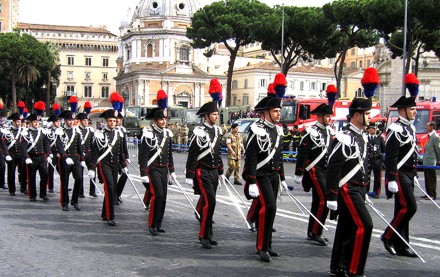
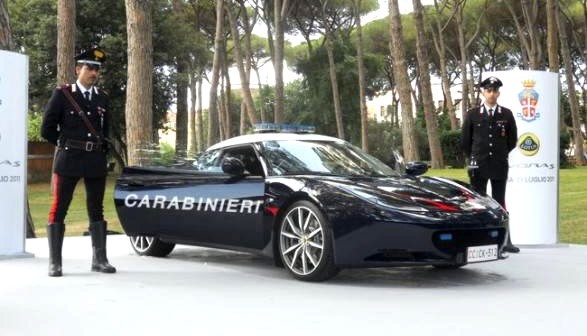




Wednesday, June 20, 2012
With Italy Pushing, There Are Increasing Bets On Europe Settling On A Growth Plan B
Posted by Peter Quennell

[Above and below: the G20 meeting in Baja California and the Los Cabos resort]
At the G20 Summit now taking place on the Baja Peninsula Italy and France have just strongly pushed for the creation of Euro-bonds.
The rates for such bonds to be secured mostly by gold (mostly on deposit in the Federal Reserve Bank in New York - where a lot of Europe’s troubles began!) would reflect investors’ perceptions of the growth potential of all of Europe, not just Greece or Spain or Italy or Portugal or Ireland by themselves.
A cheaper cost of capital across Europe would help to make the value equations start to come right. Far better than Germany’s imposed Plan A which is essentially austerity during a recession and nothing else.
In contrast the German economy is actually doing very nicely right now, with high growth and low unemployment and strong exports and huge swathes of capital moving into its rather strapped banks from the countries further south. Other things being equal, Germany could live with a “half pregnant” situation for quite a while.
But thankfully, there are two dark clouds on Germany’s horizon which may cause it to end its power trip.
First, Greece and Spain and Italy could all vote in radical-left governments within a year if austerity remains the entire mix. And second, the entire world could move into recession or even depression and then Germany would slow down along with everybody else.
Germany could do everyone a lot of good if it stopped the moralising and instead shared with all the other countries how its own extended growth came about.
It is worth reading the Wikipedia entry for Germany’s history of growth. Two post WWII concepts made a huge difference and still do. Here they are in bold.
The Germans proudly label their economy a “soziale Marktwirtschaft,” or “social market economy,” to show that the system as it has developed after World War II has both a material and a social””or human””dimension. They stress the importance of the term “market” because after the Nazi experience they wanted an economy free of state intervention and domination. The only state role in the new West German economy was to protect the competitive environment from monopolistic or oligopolistic tendencies””including its own.
The term “social” is stressed because West Germans wanted an economy that would not only help the wealthy but also care for the workers and others who might not prove able to cope with the strenuous competitive demands of a market economy. The term “social” was chosen rather than “socialist” to distinguish their system from those in which the state claimed the right to direct the economy or to intervene in it.
Beyond these principles of the social market economy, but linked to it, comes a more traditional German concept, that of Ordnung, which can be directly translated to mean order but which really means an economy, society, and policy that are structured but not dictatorial. The founders of the social market economy insisted that Denken in Ordnungen””to think in terms of systems of order””was essential. They also spoke of Ordo-Liberalismus because the essence of the concept is that this must be a freely chosen order, not a command order.
This is in many ways the opposite of the tunnel-vision Washington Consensus which the IMF and World Bank and United States for far too long wrongly imposed on the world - and of which Euro-austerity is its devil spawn.
You can find a similar philosophy to Germany’s in Japan with the Keiretsu which saw it rocket up in the 60s and 70s, and which was picked up by the Little Dragons and China and finally all the middle-tier economies seeing recent strong growth.
Europe needs to further shore up and educate its manpower. That is a no-brainer. But its major growth breakout will only come if it tweaks and reinvents its millions of technical and managerial systems, just as Germany does. And if it demonstrates a very sharp nose for future value - as in fact Italy’s nimble entreprenuers already do.
It’s smart systems to create high value that you need, guys. Don’t let the over-intrusive and not-very-enlightened economists and central bankers and politicians tell you different.
Wednesday, June 13, 2012
Today And Tomorrow Are Really Key Days For The Italian Economy If Future Sums Are To Work
Posted by Peter Quennell
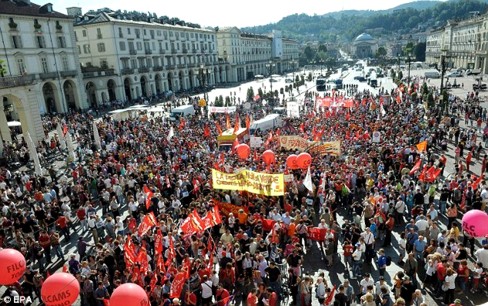
[Above: a demonstration against austerity, in Turin, one of several hundred in recent days]
The Italy central bank is selling a lot of bonds today and tomorrow to keep the government in business.
Today’s sale of 12-month bonds did not go well. It sold E6.5 billion of bonds at nearly 4 percent, almost double what it was charged just last month. And tomorrow’s sale of long-term bonds could be looking at interest rates so high that it puts real growth almost permanently out of reach.
In effect it could bake in youth unemployment up to 25 percent. The good news, if there is any, is that the disappointing sale today gave Prime Minister Monti a reason to light a fire under the parliament.
talian Premier Mario Monti is urging lawmakers to accelerate passage of reforms to help the country escape the deepening debt crisis and assure international markets that the eurozone’s third largest economy will follow words with actions.
Monti addressed the lower house before a vote on anti-corruption measures, and the morning after meeting leaders of three main political forces to urge them to intensify the reform course.
Spain’s decision over the weekend to seek a bailout for its banks has heightened pressure on Italy. The Austrian finance minister suggested this week that Italy too will need a bailout, then backtracked under criticism.
Monti has firmly denied that Italy will need a bailout, and told lawmakers that Italy is on much better footing than a few months ago.
One thing going for Italy is that those bonds are largely purchased by Italians themselves. Savings have been flying out of Greece and Spain but Italians still seem optimistic at some level that their economy can get back to former heights
Mr Monti’s pruning and tightening of laws don’t seem a bad thing. His main growth-thrust idea for all of Europe, Italy included, is to press the pedal to the floor on rebuilding all the physical infrastructure. Angela Merkel might come around if that doesnt tank Germany’s own boom.
The notion that there should be a sort of skeleton Department of the Treasury or Ministry of Finance in Brussels to harmonize fiscal policies and oversee the banks seems to be taking hold.
Still only dim comprehension (as in the US) though of how the best kind of growth really works. Hint: economists and bankers are not the first professions one turns to, to find out all about that.
Wednesday, June 06, 2012
Action On Dr Galati’s Appeal To The Supreme Court Today Moved Ominously Closer
Posted by Peter Quennell

[Italy’s Supreme Court of Cassation is the large structure at right background]
The ANSA news service is reporting today that Dr Galati’s appeal was formally accepted by the Supreme Court on 15 May.
The case has just been assigned to the First Criminal Division of the Supreme Court which is responsible for appeals involving murder. A hearing and outcome which could involve the appeal being punted back to Perugia to be done again properly might be expected in about seven months.
Still no word from Sollecito or Knox or their teams about the exceptionally tough appeal Dr Galati filed against Judge Hellman’s interim verdict releasing them. Our Italian lawyers are surprised that there has been no announcement of any new legal help.
Do the still-accused or their families understand what is about to hit them? Cassation appeals are considered very specialised and certain Rome lawyers make a good living doing nothing but handle them.
Dr Galati was a deputy chief prosecutor at the Supreme Court and would seem to have the Knox and Sollecito teams who are inexperienced at that level thoroughly out-matched. If Knox fails to appear at any appeal trial re-run she would lose the advantage of personalising her own plight with the help of her flash-mob in the court.
In Italy there is enormous suspicion that politics and money played roles in bending the outcome the last time around. The prosecution clearly felt that, and there seems a good chance the full story will not remain hidden.
We also hear that the continued rabid postings of Curt Knox’s hatchetmen are increasingly under the microscope. No sign their campaign does anything but hurt. It sure put real resolve into this appeal.
Saturday, June 02, 2012
Andrea Vogt Reports First-Hand On The Earthquakes That Have Hit Italy’s Economic Epicenter
Posted by Peter Quennell
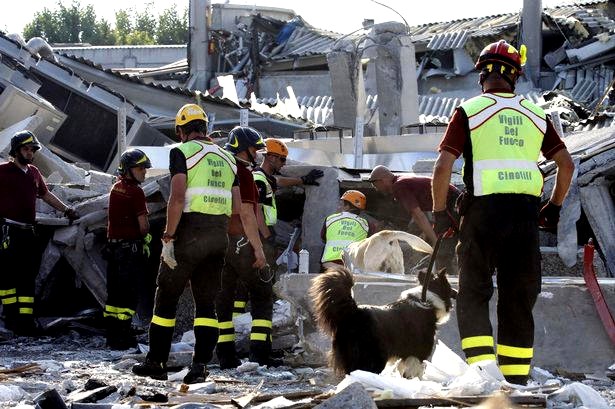
[Images here are by Andrea Vogt and one each Getty Images and NBC.]
Italy’s previous large earthquake in 2009 resulted in 308 deaths around L’Aquila.
A lot of the extensive damage to that town occurred because L’Aquila is an old city (one hour south-east of Perugia) which had not yet been braced or modernised to withstand severe earthquakes.
The two quakes that hit the province of Modena (map at bottom) in the past two weeks resulted in less than two dozen deaths, but in all other respects their damage has been far greater. They were more severe on the Richter scale than the L’Aquila earthquake and tremors were felt all over northern Italy and up into Austria.
And they struck right in Italy’s economic-exports heartland.
Car-makes Maserati, Ferrari and Lamborghini and the mortorcycle maker Ducati are all based right there and all of their plants temporarily had to shut down. Maserati and Ferrari are now owned by FIAT (majority owner of the US’s Dodge-Chrysler) which also saw other assembly plants hit.
Modena also produces cheeses which are heavily exported, and not far away are the plants of the exporters of textile, leather and jewelery fashion goods, of ceramics, of foods other than cheeses, and of Italian wines.
On-the-spot reports by Andrea Vogt with more close-up human detail than most others have appeared on a number of media websites. Excerpts from the report Andrea Vogt filed with Tom Kington which appeared on the Guardian website:
The Italian government said 8,000 people were left homeless, adding to the 6,000 already sleeping in tents and temporary accommodation after the first, 6.0-magnitude quake, which struck the same area in the early hours and killed seven.
The latest quake occurred at 9am when more factories were open ““ causing the higher death toll…. Some of the victims died in factories that had just reopened after suffering damage in the earlier quake.
“I saw dust and smoke coming up from the factories and warehouses on the edge of town,” said Cavezzo resident Maurizio Bruschi. “Many told themselves that the worst was over. But we keep getting hammered.”,,,
The quakes are a serious blow for one of Italy’s most productive regions, just as the country struggles to lift itself out of recession. “Fear will paralyse Emilia now,” wrote Mario Calabresi, editor of the newspaper La Stampa. “Who’s going to be willing to go back to work in a big warehouse now?” he asked…
Convoys of fire brigades and ambulances clogged tiny roads east of Modena, many littered with downed electrical lines and fallen debris. In the tent cities instructions were written in Italian and Arabic for the benefit of migrants working in local factories.
Other residents set up tents in their gardens, or made plans to head to relatives or to the Adriatic coast, where some hotels were opening up rooms to evacuees.”
More below.
From the same report, a story of a priest who was one of those killed by the unexpected double whammy.
In Rovereto sul Secchia a priest, Father Ivan Martini, was killed by a falling beam when his church partially collapsed on him. He was visiting the church, which had been damaged in the earlier quake, to see if he could salvage a statue of the Madonna.
“He was brilliant, and very dedicated, especially to the inmates incarcerated in Modena, where he was the prison chaplain,” said fellow priest Father Carlo Truzzi.
Andrea Vogt also posted a more detailed day-by-day report on her blog the Freelance Desk after combing the stricken areas. Her description below is what happened to the collapsed ceramics plant you can see in the first image below. .
Just a few hundred meters away, workers and curious onlookers came to see what was left of the twisted blue steel of the Sant’ Agostino Ceramics plant. They stared, the silence broken only by the eery sound of ceramic tiles clanking down from high scaffolding into the knot of bent metal. Two workers, Nicola Cavicchi, 35, and Leonardo Ansaloni, 51, died under the rubble as they tried to escape.
When Italy looses, we all really loose. Tough time to now have to pay for re-building.
Tuesday, May 29, 2012
A Second Earthquake Hits Italy One Week Later With Reported 17 Dead
Posted by Peter Quennell



